|
I have been asked by a few people recently for help with feeding their serval and caracal kittens. I thought I would compose this guide to make things easier for you instead of you having to recalculate daily and getting all flustered! Firstly, congratulations on your new baby and hello to those who are here as part of their research on owning one of these beautiful animals. I would also like to recommend this guide to those who have asked how much milk to feed a Savannah kitten or how much to feed a newborn kitten. I will also include some recommendations on what you can purchase to support the feeding routine of your serval kitten in the UK. This includes teats, bottles and methods which we use to feed our kittens. Generally, we recommend that as soon as we have established a good feeding routine with a serval or caracal kitten, that it comes to you to start the bonding process. We recently visited fellow 'feline slaves' at Cat Haven in California, USA (Dale Anderson) and we were discussing the age of which it important for these kind of cats to make the transition to their new owners. Dale and I both agreed that by waiting even past 6 weeks can really impact of the bonding process which you will have and the trust that can be built from a crucial stage in their emotional and sensory development. I always recommend that your serval or caracal kitten vaccination is not normally carried out until at least 16 weeks of age due to the slower rate of growth. This is why the feeding requirements are crucial because you become Mum or Dad; you become the only source of life for these kittens and it's crucial you get it right. Many of you who follow serval and caracal groups on social media will have read recently of a number of servals who have been suffering from a calcium deficiency where, in layman's terms, the bones fracture in the legs and the kittens become unable to support the weight of their bodies on their legs. Many of them have died. There has been a number of deaths of serval and caracal kittens which have been delivered with broken legs over the past few years, not only in the USA but in Europe and this rate appears to be increasing as people buy servals, often related, then breed them to make a quick buck. None of these breeders appear to know or more importantly care what they are doing. These servals are arriving with CITES papers with Savannah written on them and we have been contacted by people who are living in fear that their cats are illegal and fear of them being seized and destroyed. Two breeders which we urge to err on the side of caution (or basically just set your money on fire) with are in Russia and Ukraine. You do not want to go through the heartache that several people have been through with these breeders. Even more recently, servals are being sold from the UK without any paperwork at all and sent abroad in the hope that they won’t get caught or seized. This becomes more about the money than the animals. BE CAREFUL. As you know, I am very keen on supplementation and diet research for all of our cats. Some breeders heavily stress by feeding a mixed whole prey diet, that your serval or caracal kitten would be perfectly healthy and this is true to an extent. Often cats in captivity do not eat the whole prey which they would in the wild because they know that their next meal is coming by sunset. Feeding your serval or caracal kitten on chicken drumsticks and mixed minced meat is NOT sufficient for their diet. They need much more than raw meat and some bones. We always recommend you buy Keizebrink Organ Mix to add to your meat and we ALWAYS use carefully measured supplements which are like multivitamins for cats - the main ones are here. It is important that once your serval kitten is weaned that you still add some milk to their meat for the first 6 - 9 months of their life as kittens. Many will still feed them bottles to keep that bond - and that is perfectly okay also. If you do not want to feed a bottle to a serval or caracal then this is not the right kitten for you. This is a major part of the 'breakthrough-barrier' in getting them used to living in captivity alongside you. So here are some details that should hopefully get you started.
Weaning We recommend that you start to wean on a mixture of Animonda Carny Kitten “Baby Paté” and then onto the mixed varieties. This is because there is a good quality meat within these tins and there is much less risk of bacteria growth than raw meat. We also use Purrform Complete Raw Meat which must be supervised at all times to prevent the spread of bacteria potential. The best thing you can do at feeding time is place the meat on a plate on top of a puppy training pad, this way it can be disposed of immediately after feeding and a bath can be given to the kittens feet and face. You can buy the Animonda Kitten food on Zooplus and Purrform is directly from their website. Animonda Carny Kitten is a well-balanced moist food for growing cats. Your kitten needs lots of good quality protein to ensure that it has a good start in life and grows in a healthy way. This is why the Animonda Carny Kitten recipes only contain selected premium meat varieties. The freshly prepared varieties are gently cooked to preserve nutrients and fulfill the nutritional needs of growing cats. These foods only contain fresh muscle meat and offal, so that the structure of the meat is maintained, providing your cat with a healthy dose of natural taurine. All of the varieties are grain free, making them suitable for cats with allergies and intolerances. Animonda Carny is also free from artificial additives and soya. Animonda Carny Kitten has a natural, authentic meat flavour that cats love. The label shows which meat types are included, so that you know exactly what you are feeding to your pet. Ingredients: Beef, Chicken & Rabbit: Beef (33%, lung, meat, heart, kidney, udder), chicken liver (20%), rabbit (12%), calcium carbonate. Beef, Veal & Chicken: Beef (32%, meat, heart, kidney, udder), veal (17%, lungs, liver), chicken (16%, liver, neck), calcium carbonate. Beef & Turkey Hearts: Beef (50%, lung, meat, heart, kidney, liver, udder), turkey hearts (15%), calcium carbonate. Poultry: Beef (39%, lung, meat, heart, kidney, udder), chicken liver (14%), turkey hearts (6%), duck hearts (6%), calcium carbonate. Additives: Nutritional additives /kg: Vitamin D3 (200 IU), iodine (0.2 mg), manganese (1.5mg), zinc (10mg). Analytical constituents protein 11.0 % fat 6.0 % fibre 0.3 % ash 1.7 % moisture 80.0 % taurine 0.8 g/kg You can buy the Animonda Kitten food on Zooplus and Purrform is directly from their website. How to start You would ideally feed from a teaspoon (silver spoon) and wedge just under the front teeth at about 4 weeks old. Your kitten will show resistance to this, but once they get a taste, they will likely start to nibble it off the spoon. You may find whatever you get into their mouth they just push back out again with their tongue. This is a normal part of weaning and don’t lose hope. Keep trying twice a day and continue with bottle feeds as normal. Once they take it easily off the spoon you can lure them to lean down to the bowl with the spoon. You might find they only eat the bits you scoop onto the spoon but keep encouraging them to follow the spoon to the bowl and they will soon be eating from the bowl without your help. You should only need weaning paste for about a week at the most and then you can move onto more chewy, thicker textures. Be very careful about giving him chicken drumsticks as they don’t really have that much goodness in them due to the fact that the cats need organs in their diet to be complete. The chicken meat and bone is good but they will be too little to chew the bone. The better alternative is day old chicks. They are GREAT fun. Very tasty, high in nutrients and fun to throw about for an hour before eating. The bones are soft in day old chicks and so easy to eat. AT NO POINT SHOULD YOU GIVE YOUR SERVAL BISCUITS/ KIBBLE. IT IS NOT A NATURAL FOOD FOR THEM. Junior Diet You can feed your kitten up to 6 - 10% of their body weight per day for good growth.Once your serval has got to 4 months they should be ready to eat quail and larger whole prey. You can give this to them gradually by cutting them in half with a butcher’s knife and serving in parts. Be careful not to leave uneaten food lying around for too long as the bacteria grows at room temperature and you do not want a sick baby serval. By the time they have got to 4 months of age you really do not need to give them any bottles but can continue to do so for bonding purposes. Adult Diet You can really mix it up to make it interesting for your serval or caracal cat. You can tie food on string to the roof of their enclsoures so they have to find a way up to it, you can hide it inside cardboard boxes or up a tree! They enjoy 1 quail and 5 day old chicks in the morning 0800 hours, then they have around 500grams/ 1.1lbs of meat at night for dinner at 2000 hours. You really want to stick to around 3 – 5% of their bodyweight in meat per day depending on their metabolism. A pregnant serval or caracal should be allowed at least 2 – 3 times the amount they would normally eat on a daily basis. They will need it for the growth and feeding of the kittens after birth. We always continue to feed our servals this amount for 3 months after the birth of their kittens even though the kittens are hand-reared by us from 3 weeks of age for socialisation purposes. This helps to bring mum back to perfect condition. A “working” serval male will also require a good diet to keep his energy levels high. Servals and caracals do become lazy if overfed, so try and keep them in a nice lean condition. This is copyright and watermarked. You may contact us for a copy of this table for personal use. We even import the milk for you! You can buy the milk required for healthy Serval, Caracal and Savannah Kittens. Zoo Logic Milk Matrix 33/40 A milk replacer and nutritional supplement fortified with vitamins and minerals to be used in feeding wild and exotic non-domestic animals such as Squirrels, Rabbits, Opossum, Wolves, Lions, Tigers, Pumas, Servals, Caracals, Binturongs and all Rodents. Part of an integrated system designed to let you virtually match any mammal’s milk. Mixing Directions: Reconstituting milk replacers with water is most accurately accomplished by weighing the individual components. If weighing is not possible, use the following volume measurements to reconstitute Milk Matrix 33/40 powder to the indicated concentrations: A volume is a measurement such as a teaspoon, tablespoon, cup, etc. Suggested powder:water mixing ratios for various species: 1:1 Rabbit. Most Rodents 1:1.5 Squirrel, Opossum 1:2 Serval, Caracal, Lion, Tiger, Puma, Wolf 1:3 Binturong Milk Matrix 33/40 Weights determined by scooping powder from the container and leveling. These values are only guidelines and can vary 5-10% due to variation in production. Milk Replacer: Milk Matrix 33/40 may be used alone or blended with other products in the Matrix family to formulate a milk replacer with nutrient levels that closely match a species’ natural milk. As a general rule, liquid or reconstituted milk replacer should be fed at a rate of 10% to 20% of the bodyweight daily or as tolerated and required for steady growth and proper stool condition. Divide the total daily amount into 6 to 12 feedings per day, depending on age, condition, species and staffing. Reconstituted milk replacers should be refrigerated and used within 24 hours. Feed at room or body temperature depending on size and condition of animal. Weaning Food Supplement: Because of its highly digestible milk nutrients, the formula used during suckling is an excellent supplement during weaning as a transition from milk to solid food. Add to the diet at the rate of one teaspoon of powder per 10 lbs. of bodyweight. Calorie Content (calculated) The calorie content (ME) is 740 kcal/kg or 11.1kcal/tbs when powder is reconstituted 1:2. Unblended product: Refrigerate after opening. Discard if unused after three months. Blended powder: Refrigerate for up to three months. Note: To extend storage life of opened or blended powder, freeze in sealed container; discard after six months. Unopened product may be frozen to extend shelf life for six months beyond expiration date. Guaranteed Analysis Crude Protein, min. 33.0% Crude Fat, min. 40.0% Crude Fiber 0.0% Moisture, max. 5.0% Ingredients Vegetable oil (preserved with BHA, BHT, propyl gallate and citric acid), dried skimmed milk, casein, egg yolk, L-arginine, DL-methionine, calcium carbonate precipitated, potassium phosphate monobasic, lecithin, dried corn syrup, calcium hydroxide, salt, monocalcium phosphate, sodium hydroxide, choline chloride, potassium chloride, silicon dioxide, magnesium carbonate, taurine, magnesium sulfate, vitamin A supplement, zinc sulfate, vitamin E supplement, ferrous sulfate, niacin supplement, copper sulfate, calcium pantothenate, vitamin B12 supplement, manganese sulfate, vitamin D3 supplement, folic acid, riboflavin, thiamine mononitrate, calcium iodate, pyridoxine hydrochloride. KMR Kitten Milk Replacer - PetAg RECOMMENDED FOR F2 SAVANNAHS ONWARDS. Storage Opened powder should be stored in a cool, dry place. Reconstituted KMR must be kept refrigerated for up to 24 hours. Opened powder must be refrigerated for up to 3 months, or can be frozen for up to 6 months to preserve freshness. Ingredients Dried skim milk, casein, vegetable oil, butterfat, corn syrup solids, mono- and diglycerides of edible fat-forming acids, lecithin, L-arginine, choline chloride, calcium carbonate, potassium chloride, monopotassium phosphate, magnesium sulfate, salt, carrageenan, tricalcium phosphate, dipotassium phosphate, taurine, ferrous sulfate, dicalcium phosphate, ascorbic acid, zinc sulfate, niacinamide, vitamin A supplement, copper sulfate, vitamin E supplement, vitamin D3 supplement, calcium pantothenate, manganese sulfate, potassium citrate, thiamin mononitrate, pyridoxine hydrochloride, riboflavin, potassium iodide, vitamin B12 supplement, folic acid, biotin. Guaranteed Analysis Crude Protein, min 42.0% Crude Fat, min 25.0% Crude Fiber, max 0.0% Moisture, max 5.0% Miracle Nipples and Syringes Beaphar Lactol Feeding Set
Finally getting through the backlog of filing and paperwork we had to get done! We have a software where we log all our cats vaccines and batch numbers in their individual files on our system. This system can be handy if you want to add notes to a cats file, find information quickly for kitten owners/potential buyers and the good thing about the pedigree aspect of it is that we can look back so many more lines very quickly when they are all linked together on the system. I love the software storage but data entry can be very monotonous- even worse when you need to make sure its completely accurate. Once it's done though the benefits are fantastic as it means that we can review the whole cattery at the click of a button. It is also handy to schedule in reminders for boosters. We have started to do boosters every 18 months as opposed to annually to prevent over-vaccinating. We no longer vaccinate for the Feline Leukemia Virus as we have all our cats indoors and fully protected. I will write more on this vaccination later. How are you all? Are there any signs of Spring for your pussy cats to enjoy where you live? This holiday period we are removing the newly laid bark in some areas as it's been selected as a new litter tray despite the cats having two each! We will have to resort to paving slabs in areas which we really wanted to avoid and give them a more natural surrounding. In the case of infection control, the cats surroundings must be kept sanitary and hygienic - plus we don't want any unexpected friends that are very small and furry. The bark is very porous so even though we collect waste then disinfect the areas, the scenting of faeces or urine in an area (whether it be outside the home or inside the home for other cat owners who have cats that like to defecate outside their trays), the saying is true that once it's happened once, they will likely always go back to that area as no cleaners can remove the scent which is detectable by a cat. We can't wait for the weather to get that bit better. The sun has been shining a lot more during the day although it doesn't seem much warmer. The flies always come when the farmers start on their fields so at this point we always remove the hay outside and discard sand boxes. The wild cats simply don't like litter trays though so we have to be busy cleaning more throughly, regularly. Wild cat urine is also a lot stronger in smell than your domestic or even F1. Update on our new centre progress Its going to to be an exciting year. We have some wonderful cats coming to join us into our breeding programme from the USA and Europe and we have successfully rehomed ones that we decided to no longer use in our programme.
We have been getting to work on our new concept of the Feline Centre which we hope to open either at the end of 2017 or early 2018. This centre will be based at our home and only be available to visit through private arrangements for a one to one hands on experience with an array of cats. The purpose of the centre will be to support the reintroduction and preservation of certain species which we have been offered to work with, even the privilege of supporting some endangered species, which we will be helping to support the breeding programme with our Zoo colleagues, private owners and colleagues within our own facility. It is very exciting and we can't thank the people enough who have shared their time with us, forming good working relationships and some friendships within the professional wild animal field. The dedication and determination on our part has helped to demonstrate the passion to work with the cats and that has been worth its weight in gold in achieving certain goals. It is not an act or falsified in any way to portray an image for commercial purposes. That's the beauty about being a small team of Wife, Husband and some extended family members. The friendships are closer with those who we call friends and they know they mean a lot to us. This also means that when people come to us for advice we can give them it with a heart felt response. If someone asks us for a certain thing which doesn't fit with our vision and goals then we won't offer it - even though it could be very easy to do things and make a quick buck. Working at the Zoo is also a massive milestone and as I'm going afterwards to do Veterinary and Zoo related studies, it all seems like we are on the right track. We are very much looking forward to being able to provide people with that much sought after "experience day" where they can come and be a keeper of our wild cats for the day and really get involved with the husbandry. We feel that this will be very educational in itself to allow people to properly identify if wild cat ownership really is for them and provide the opportunity to ask a load of questions. Some of the big cats may not be suitable for the hands on experience as much as the smaller cats such as our servals and caracals but we do aim to work on that. For those who decide to apply for a wild cat from us (or others) we will be aiming to provide a days course where they will be given the dwa requirements and a chance to run through their own plans for their enclosures, experience the cats hands on, prepare food and learn about the techniques of smaller wild cat feeding, learn about diet and nutrition, help with the cleaning of the enclosures and discuss environmental enrichment, discuss breeding plans and receive support and guidance on getting started. It will be amazing to show people how loving our tame wild cats are and be able to show them how to get their own wild cats to grow up in the same manner of mutual respect and love (something which is often overlooked when buying a wild cat). Behaviour training and understanding is one of the most important aspects of wild cat ownership because without creating respect for each other you could simply have a wild cat which gets no enjoyment from living in captivity, you don't get the chance to enjoy the cat and the whole idea of having a bond becomes a distant dream. We hope to help people get it right from the word go and really enjoy the experience it can bring. As a secondary additional service the centre will take any wild cats or hybrid cats which need a new home but one cannot be sourced from the current owner or the cat requires to be placed in emergency respite until paperwork clearance comes through. We hope to work with behavioural issues if necessary putting the feline behaviour management qualification into place and also putting our work in Africa with cats to good use. We will always aim to rehome any cats that fall into the DWA category. This service is currently active but we are in the process of making it all more official through registration as a separate entity and not part of Stylisticat. Hope you enjoy your Easter break! We'd be happy to have any volunteers who would like to come and help us do some groundwork and spring cleaning. (Cat cuddles guaranteed) ;) and remember: chocolate is poisonous to cats so make sure you keep those eggs safely stored. Sincerely yours, Kayleigh McIntosh-Lowrie Stylisticat UK This is written purely on the views of us at Stylisticat and should not be used or reproduced anywhere else without permission. This is simply taking into account our own views and morals on what is ethical breeding and what best guidance we can give to those who come to us looking for their first kitten in their breeding programme. We hope it answers our most commonly asked questions. 1. I’d like to start breeding cats – how do I start? a. First of all, write down a list of all the reasons why you want to start – it’s pretty simple, you love cats and you love kittens so you’d like to be able to produce your own and break even for costs along the way or perhaps you want to try and make money? b. Now list the good and the bad things – things you think that are important on each side. c. The good times are wonderful - How do you think you would cope with the bad times? d. Now you have to choose the breed that you feel you admire the most or if you like more than one breed then choose the breed which you would like to start with. e. Study the breed standard of that breed well. Get to know what a ‘good’ example of the breed is and start to have a look at kitten adverts to see which ones you think are good or not. 2. Who can advise me on what kittens are good for me to breed from i.e. breed quality? Find a Mentor. You can do this via TICA or by asking on Social Media Breed Mentor groups. Remember social media is full of deception and not everything you see is true. Take everything you read with a pinch of salt. 3. How do I know if the breeder is a good person to buy from? Isn’t it best to judge by Facebook followers and likers? a. Don’t be fooled. Just because someone appears ‘experienced’ because they have loads of kitten buyers commenting on their cats purchased from the breeder, doesn’t always mean they are a good breeder. Look at the timelines of the breeders. Do the cats with their kittens look clean, look like they feel safe and happy? – or do they look like they are scared of the person taking the picture? Remember many breeders have a lot of kitten testimonials via Facebook or other avenues because they produce several kittens on an annual basis – some in the region of more than 300 kittens a year. That’s a lot of buyers…but, the stance of breeding – is this really a cattery you want to morally look up to? Will this person have the time to help you and guide you if something goes wrong? b. How many kittens have these breeders produced in the last year that you are aware of? Is it a kitten farm? c. When was the last time the Queen had a litter before her most recent one? Are they breeding their cats ‘back-to-back’? The guideline is 6 months minimum per litter for a break unless there is exceptional circumstances, such as retirement from breeding after next litter. d. Do the Queens and Studs appear to be hand selected and bought into the cattery suitable for purpose? Some cats are only in catteries because they were ‘super deals’, ‘moved along’, ‘required urgently i.e. a stud’, ‘part of an exchange’ etc. Don’t get me wrong, sometimes the above can be fantastic examples but always criticise the parents of the kittens you are looking at – after all your kitten has a good chance of looking like one or both of them when they are grown up. Some cats are bought on the basis that it’s all that someone can afford and they are working with poorer quality cats than those who save to import fantastic examples, which cost twice the price of those in the country already after shipping costs, taxes etc. e. Do all the “Likers/ Followers” tend to be the same group of people? It is known that not all breeders like each other but what you will find in the social media world of breeding is that some breeders can work together to foster a ‘like for a like’ relationship, where the circle/clique support each others adverts and posts. You will often see a pattern forming between these breeders posts and be able to work out who is working with who. This should be useful to you when looking to obtain advice on the standard of a certain kitten that you wish to purchase as a breeder i.e. groups are often happy to compliment their friends kittens but slate others who are not within their clique. This is where you need a good, professional non-biased mentor who is happy to work independently. 4. I’m finding it really hard to source a kitten which has all the breed standard points. Where do I look? a. Welcome to breeding. You will never get a cat with every single point of a breed standard – there is always something to work with but this is where is important to be selective and decide what you are personally willing to accept and what you deem is not allowed in your programme. Make sure you get advice on a kitten so that you can have help to identify what traits tend to stick in a programme and what is difficult to remove i.e. small ears when they should be large, or long tail when it should be short etc. b. Choose what is important to you in that breed and then start selecting what ones you think are good. Always look at the lines – this means look at other cats which have been bred from to create the Queen and Stud of the kittens. Look at the Stud and Queen very critically. Also, remember that you will be looking to pair up your kitten with another one to mate, so you will be looking for something that would complement the other referring back to the breed standard. So if the kitten you buy has small ears when they should be large, you want to find the paired partner with big ears to try and improve that trait. 5. How do I know what I should be testing my kitten for in terms of health tests? a. Every breed is different. Some breeds are more prone to certain health issues than others. This is where breeders should help you out to identify what you need to test for. Another source of information which is quite useful is Langfords – they have a breed selector and you can have a look at what you can test with them and what is known to affect the breed. b. We test all our cats for PK Deficiency. You can see more on this below. c. If buying a breeding cat we always have an upper respiratory panel and a faecal panel performed to rule out infectious diseases. Read about them below. d. REMEMBER some tests you may need to do annually such as HCM testing. You must incorporate the cost of this into your breeding planned costs. 6. Can I make money breeding cats? What does it actually cost? This depends on a whole host of factors that it is hard to define for each individual. a. Our costs – something to consider is that a breeder can house their cats in a dog kennel if they choose and others can house them in acres. We say, “Some breeders choose to run their catteries at the bottom of the cost mountain and others choose to run them at the top. Where you choose to place yourself is entirely your choice and doesn’t mean that those ran nearer the top are any better than those ran near the middle, but they are definitely better than the bottom”. As long as your cats are well cared for and are fit and healthy for breeding then your costs come down to choice. It is also up to you what you sell your cats for, market influence obviously has an impact at that point though. b. Relating to all the above points, if you have high-quality kittens who have been mated through hand-selected parents, tested for diseases and have a well-run cattery then there is no reason why you cannot charge more for these fantastic kittens, than those who do not test or import new bloodlines. c. You have to make the right choices for you and your cats. A fancy kittening fibreglass box costing £300 is not really any better than a recycled cardboard box. You choose where you spend your money and through time you will learn what is worth spending money on and what is not. d. If you decide to show your cats, the money you think you will regain from sales from having a champion cat is often eaten up by the physical costs of showing in itself. Showing is definitely for those who are passionate as it does cost a lot of money to do it consistently where travelling around the country and the world is involved. Many breeders competing in the classes will be friends but some can really dislike each other and it can be a very tense environment. 7. Can I have my Queens and Studs in the house – do I actually need ‘cattery housing’? a. Yes, of course you can – but this comes with a firm ‘cat urine’ warning!! Females and males spray when they are in heat and some females actually spray when they are not in heat just because they have hormones in their body. This is why it is always best to spay a female and neuter a male who you have as a pet. b. You may also end up with kittens far too early or too often as you can’t control when the male slips out a door into the other room – and it only takes a second in some cases! c. You can keep Queens in the house and keep the stud outside if you wish to remain a small cattery. When I say outside, I mean in an insulated stud pen where they have an outside run and an indoor sleeping area, with litter tray, food and water bowls and a heater/ heat pads. d. If you have a male in your home you will soon see the devastation of the urine sprayed in places you can’t find and the smell is just awful. Don’t take the chance! Males are usually okay in the house until around 6 months. e. We have many males who don’t spray at all in their pens and others who have definitely marked their territory. f. Always remember that keeping a male on your premises will involve a smell so do bear this in mind in terms of neighbours. 8. How often will my cat get pregnant? a. You will have heard of a cat in heat or in season. Our youngest in heat was 5 months old (I’ve heard of even earlier!). After the first period of your cat calling (meowing very loud over and over), they may go back into heat every few weeks or months depending on the individual cat. b. Care must be taken to ensure your cat doesn’t get pyometra if she’s calling on a number of occasions and not being mated. c. Some choose to mate their cats around 9 months old if their cat has been calling repeatedly to prevent this from happening, some disagree with this method by saying the risk is negligible and the cat is too young because kittens are not classed as adult cats until 12 months of age. d. A good age is 12 - 16 months old for a cat to have her first mating and on her second heat at a minimum. 9. I’ve bought a female so how do I look into Stud for her – do I just call someone with an advert when she is in heat? a. B-I-G Mistake. Please don’t ever just ‘take your cat along’ to someone you don’t know. Try and plan your mating as soon as you have decided on a kitten! It can take months to find the right breeder. b. Ideally, we would recommend you buying your own boy because you can test him and your cats will be fully associated with his smells and surroundings. For reasons on why we don’t stud or what we recommend for stud click VIEW MORE BLOGS and scroll down to "Why we don't offer Stud". c. If buying a boy is not an option in the initial stages because you would like to try and test if you like breeding first, then we recommend you getting to know people through their catteries. You will be able to find out what cats have been health tested including their lineage and you will be able to have a well planned mating. Referring back to my earlier point, you will also need to search out a stud which matches your queen to ensure they compliment each other. d. Breeding for the sake of breeding and not actually aiming for better kittens than the parents or good breed standard is often frowned upon in the breeding world so choose your words wisely. Everyone is watching on social media. Many sit with their claws out ready to swipe your legs from under you and trip you up before you’ve even began. e. NOTE: Be very wary of using stud, i.e where cats come from that have been used at that stud already – are they from known diseased catteries? 10. Are breeders really good at supporting each other? Will I get loads of support? Well if you got this far, you must be still interested in breeding despite the work involved. a. The answer to that is – it’s just your luck. It depends where you buy your cats from and if the people around you ‘like’ that person or not – even though it’s absolutely nothing to do with you (why someone else doesn't like them). You may be pigeon-holed because you have cats from a cattery and this goes back to the group/clique I was referring to earlier. It is completely unavoidable in my opinion as it happened to us too. The longer you breed the more people start to see who you are and the effort you put in. You gain respect and you lose it at the same time depending on who you work with. It can be VERY petty and exhausting. b. Some people will not buy kittens from certain lines so CHOOSE WISELY. c. Some breeders have it in their contracts that they are not allowing breeding of their kittens to certain lines. d. Some breeders will be completely unbiased and help guide you. These are rare gemstones. Keep them close and make sure you let them know how important they are to you and your programme. e. Have you called up about kittens and had a breeder say to you – we have the best, don’t buy from them or them? That’s the breeders to avoid. They are already ‘bitching’ to you before you’ve even agreed to take a cat from them and through time, don’t think it won’t be you they talk about on the phone. f. Choose those who remain professional. We have had phonecalls where we have been ‘set up’ and asked questions about another breeder who had kittens for sale at the same time. The phonecalls were clearly to try and get us to slate the other breeder for reasons unknown to us, but every time we have remained professional and tried to urge the person to get in touch with the breeder they have questions about them. As much as you have your own opinion on another breeder it is important that you keep it to yourself unless you have been asked about known problems in a cattery, then you may have to say to protect someone coming to harm. You will learn over time that there is so much time-wasting involved in cat breeding and it’s the people that cause it – not the cats! g. We have a lot of good friends in the breeding world, some of them have become such good friends over time that we spend social time together. That is the flip side to the bad times – you will learn who you can trust, but it is a journey and takes a lot of self-belief and your own analytical skills. h. Another point worth noting is that some breeders may have been breeding for a long time but still not actually know much about certain aspects of breeding – some simply don’t care. Do your research and you will arm yourself with knowledge. 11. What about contracts – what should my contract have in it and are they worth the paper they are written on? a. Most contracts aren’t enforceable – without great cost anyway. b. It is worth noting that it is given to you with the trust you will respect the conditions in it. c. If you are sold a kitten without a contract and a ‘letter’ of sale, it is worth noting that you have nothing to go back on if there is a problem with your kitten down the line. d. If a contract has a ‘sum’ attached to a clause, then it is enforceable at small claims court provided there is proof of fault. We have sums attached to very important parts of our contracts. e. Do not leave a breeders premises ‘owed’ paperwork. Make sure all registration and testing certificates are in-hand. You may learn the hard way about making this mistake. 12. What about having the same cat appear in a cat’s pedigree? Isn’t that inbreeding and should be avoided? This is often misunderstood and in simple terms, a breeder may double up on cats in a pedigree to try and ‘lock in’ a good trait by doubling up on the good quality. When doubling up on the good genes, the bad genes are also doubled up and can help a breeder identify faults within a line to try and eradicate them from their programme. 13. So anyone with a lot of cats should be avoided? Definitely not. All I am saying is to make sure you visit and see for yourself the conditions in which they live in. If you are satisfied that the cats are healthy and happy, not pacing back and forth continually in a pen, kept in sanitary conditions then you can make an educated decision. Some larger breeders have staff to help them keep their cats clean and happy. Some do not but work all hours to ensure that they have the above. Some work all hours but have so many cats that they do not receive any human interaction and become ‘damaged’. This can pass on to kittens. 14. Are there any ways you quickly identify what will be worth looking into in your pursuit of a new breeding cat? a. We look at the pictures initially: i. Is the mum healthy looking – a good weight? ii. Does mum appear happy with the breeder taking pictures or does she look scared of the person? iii. Is the bedding covered in old faeces, urine, litter and food? Does it look clean – take your eyes away from the kittens in the picture and look around? iv. Are the third eyelids over on the mum or the kittens (often a sign of an underlying problem)? b. We look at videos if we can’t visit: i. Are the kittens scared of being handled or do they appear friendly? ii. Is the mum friendly and loving to the breeder in the video (Socialisation identification)? iii. Is there any runny eyes or nose or sneezing heard (disease identification)? 15. What if I don’t like it once I have kittens? What if I can’t afford to keep breeding or look after them properly with all the tests?
Usually the breeders will take your cats back or help you sell them on again. This is why it’s important to find a good breeder to buy from. 16. I got some prices for the tests you recommended and I don't know how I would break even when I sold on my lower generations or SBTs! Many breeders don't test for this reason but that doesn't mean it's okay. It is possible you could reduce the frequency of testing but still carry out regular testing. i.e. reduce testing from annually to bi-annual. At least in this instance you are doing the best you can. 17. How do I know what’s good quality/ standard when they are small? You will develop a critical eye once you get more experience with the breed. A mentor will help you. It is advisable not to buy a kitten for breeding until they are at least 10 – 16 weeks old and you can properly analyse their development against their standard. You may find that you will have a good line come from a breeder which already has a waiting list against it for breeding kittens. This is usually a good indication that the kittens will be good quality. Remember: A smooth sea never made a skilled sailor... Is there anything else we can help you with? Ask a question below in the comments. Best Wishes, I thought it was important to put up something for those who ask us for stud to read.
Careful consideration is taken to have a NEW cat or kitten which we intend to purchase tested before it leaves the premises of the breeder and again upon arrival. It is only rarely we will accept a cat in which hasn't been tested before it arrived, which we then test. Testing is wonderful and horrible all at the same time. Why do I say that? Sometimes you can bring in the most beautiful cats to your cattery which look perfectly fit and healthy and they only display the symptoms of their internal issues when they are stressed. Basically, even if you test your cat before it leaves, it could show positive when tested on arrival due to stress triggering the immune system level to drop, allowing the virus to be (in simple terms) allowed to develop and attack. The times of stress in a cat usually involve either: A: Travel, B: Mating, C: Settling into a new home/ environment, D: Overcrowding. If you have had a cat tested before it leaves for a full upper respiratory panel including Calicivirus, Chlamydia, Mycoplasma and Herpes, along with a faecal PCR (Poo Sample), then this gives a full range of results of the status of the cat in a normal state i.e. non-stressed. The cost of these tests are £225 per cat for us. Upon arrival, the cat would then require to be tested ideally immediately and AGAIN about 2 - 3 weeks later (with results taking 10 - 14 days to come back) to ensure any infections had adequate incubation time to be displayed on a PCR test result. This way the cat has been tested 3 times and had a quarantine period of at least one month at our premises before being fully admitted i.e. a stud being put with a queen. If we have a new Queen, then our policy is that we will allow her at least 2 months of settling in time, before considering putting her with another cat to live with. The 2 months is not inclusive of the quarantine period as there is a specific pen to cover the quarantine period and we only have one (or two if from the same place) at the one time in this area. Why would we spend £££ per cat on testing before having them fully integrated? Most Upper Respiratory Infections spread so easily among catteries as they can be spread from clothing, shoes, gloves, door handles and even the air. This is why perspex is used in the event that the tests have missed something which hasn't been shed at the time of testing so that if anything does ever come up it will be contained to a pen. (Touch Wood). So if your cat was in heat and you brought her to us, you would've spent around £225 x 3 sets = £675. And this is before your stud fee was charged. We would also retest our stud and show you a clear panel but this would be included in the fee. Fee-wise - what would we need to charge for this to be worth it? The normal fee for stud in the UK is £500. If we deduct £225 from this it's not really worth all the hassle... Some cats have intermittent shedding of viruses so it cannot even be detected with tests unless you repeat weekly - I never want to have to go through the cost of that so I don't want to put my cats at risk. Your cat would have to clear the 3 months quarantine procedure so we would need to then wait for the appropriate heat period to have her mated thereafter. Housing someone elses cat for 3 months plus however long a hear-period takes to appear can be very costly when it's a heated pen, food water, wastage etc. So now realistically we're into the £850+ fee for stud by the time the testing is done too. £675 testing + £850 stud fee = £1,525 cost outlay to you. Oh, and have you got an HCM scan certificate to show us? By this point most have ran a mile. When we mention HCM scans they don't want to know! READ ABOUT HCM HERE. We will not allow any of our boys to mate an untested Queen inclusive of HCM too. Our HCM tests cost £135 per cat, so if you haven't done it already then include this into your cost. Now you're at £1,660 and you know that Savannah Studs can be purchased between £1,500 and £4,000, right? You can own your own tested and safe male for the same cost it would likely be to stud here. Always ask for the test certificates for HCM and PCR tests before you bring a male into your cattery. You can have a happy female more likely to be mated because she is at home and putting her in a males pen on your own premises will not cause any high levels of stress. It is always worth noting that any mating process is stressful for any cat as they are highly hormonal during that period so it is not normal behaviour for them. By moving the female off-premises, it can trigger other elements of stress which can cause complications and then who will be the one to blame - the one with the Stud or the one with the Queen? Chances are, as soon as we mention tests, people tend to run a mile and just take their cat untested to Joe Bloggs' cat untested and hope for the best. That's fine if they are happy with that - it's completely none of our business and we are only writing this to display the reasons why we don't offer stud. Call us too protective perhaps, some even call us over the top. Some breeders will tell you that you don't need to test, that you don't require an HCM Scan because it's inconclusive particularly in early gens (which is a load of rubbish as we've never had an inconclusive result even on F1's!), that HCM is not a problem in the breed so you don't need to worry (they obviously do not read about the owners who have lost cats to HCM on Savannah groups), that the disease is in all cats so you may aswell not worry about any infections...(no comment) and my all time favourite...wait for it: "But I KNOW my cats are fine. IF there was anything wrong with them I'd be able to see it. I've never had any problems so I KNOW they are fine and don't need to test them." Yep. I have even discussed testing before with a breeder which claimed the above. Wow, really? Microscopic Vision. I have heard it all now! You cannot KNOW simply by looking at your cats. The only way to truly know is perform a full panel of PCR's. As long as we're clean and healthy and continue to produce clean and healthy cats then that's all that matters here. I'm sorry we can't help you out but hopefully potentially saved your cat or whole cattery from being put at risk by you reading this. NOTE: We don't offer stud to general public but do work with Zoos and private owners on the above stud plan when working to preserve any at risk species with some of our other wild cats, where the husbandry we provide is also reflected in their own facility. Best wishes, If you thought owning and breeding a DWA (Dangerous Wild Animal) or raw fed cat had the same hygiene routine as a normal cat then read on! As an insight, we thought we would give you an idea of what we do to prevent cross-contamination and protect ourselves from infectious diseases/ parasites. Following these guidelines can seriously improve the health of all involved in a DWA cats facility.
We have outlined several routines that you should follow to ensure you have excellent standards of infection control and husbandry to protect all the cats, animals and people under your care. Advice also included for those who are considering breeding cats or keeping larger species. Please remember that certain groups are more susceptible to risks of infection, for example, children under 5 years old, the elderly and those who are immunosuppressed. If you have any questions, then please get in touch and we’d be happy to help! FEEDING
WASTE DISPOSAL
MAJOR POINT Ensure all cleaning products are phenol-free and safe for use in cats (felids are susceptible to phenolic poisoning). ENSURE YOU ARE USING A GOOD MOISTURISER ON YOUR HANDS AFTER YOUR WORKING DAY WITH ANIMALS IF YOU ARE REGULARLY HAND SCRUBBING TO REDUCE PROLONGED IRRITATION TO SKIN. Suggested cleaning products: (We use both of these products) Blankets (cleaned daily) FIOSC or VIRKON S Cages (cleaned daily) FIOSCXD or VIRKON S Foot Bath (changed daily) [ if used] FIOSCXD or VIRKON S Face and Bottom Cloths (changed daily) Milton 12.5ml per litre. Soak for at least 30 min. Rinse thoroughly in water before use Floors and Other Hard Surfaces (cleaned twice daily or as necessary) FIOSCXD or VIRKON S Vaccuum hoses, heads, brushes and internal (cleaned weekly) FIOSCXD or VIRKON S VIRKON s: Virkon S is the premier broad spectrum virucidal veterinary disinfectant, is recognised by industry and governments worldwide as a disinfectant of choice for livestock disease prevention and control. Virkon S is a pink powder that is added to water to make a disinfectant solution. The standard dilution is 1% (at this dilution rate this 10kg pack willl make 1000 litres of disinfectant). Virkon S features and benefits:
Foot & Mouth Disease: 1g in 1300ml of water Swine Vesicular Disease: 1g in 100ml of water Diseases of Poultry: 1g in 280ml of water General orders: 1g in 100ml of water Surface disinfection Routine disinfection for all surfaces, earth, wood, and concrete. Use a 1:100 dilution (10g of Virkon S for every litre of water). Apply via a pressure washer or other mechanical sprayer, apply Virkon S solution at an application rate of 300ml/m2. Equipment disinfection Routine cleaning and disinfection of movable farm equipment. Use a 1:100 dilution (10g of Virkon S for every litre of water). Apply using a brush or pressure washer, wash all equipment in Virkon S solution until visibly clean. Water system disinfection. Terminal disinfection 1:100 to 1:200. Continuous disinfection 1:1000. Foot dips Routine disinfection of footwear. Use a 1:100 dilution (10g of Virkon S for every litre of water). Replace solution once it has either become soiled or after 4-5 days. SOURCES: Stylisticat UK, Emergent Disease Foundation, ABWAK
|
Welcome | Welkom | Ben arrivata | Velkomst | Tervetuloa | Bienvenue | 欢迎 | Willkommen |
ようこそ!| Sveiki | Добро пожаловат | Välkomna | Velkommen | ยินดีต้อนรับ | خوش آمدید | 환영 | AuthorAll about Stylisticat, written by Kayleigh McIntosh-Lowrie Archives
February 2021
Categories
All
|
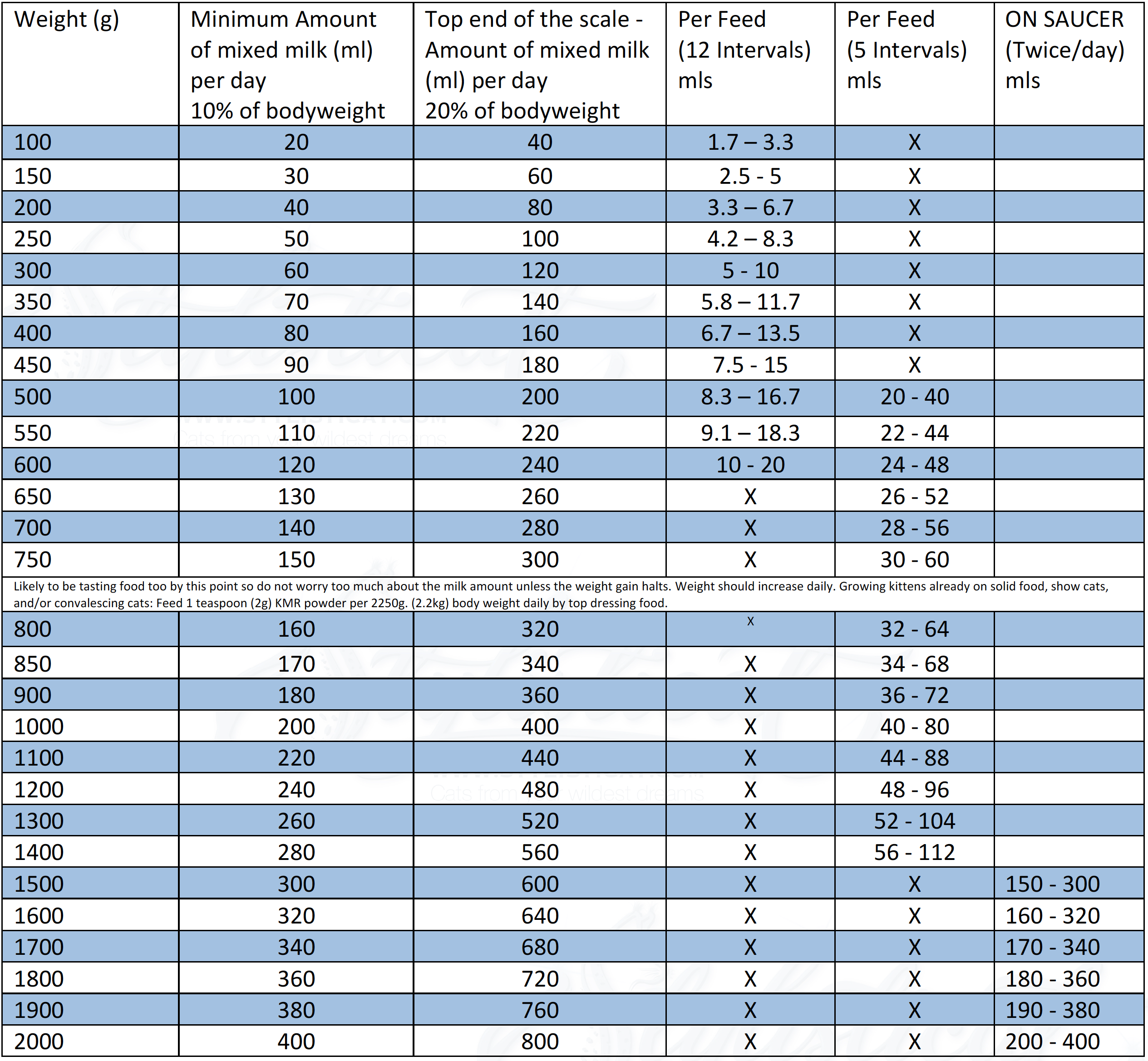
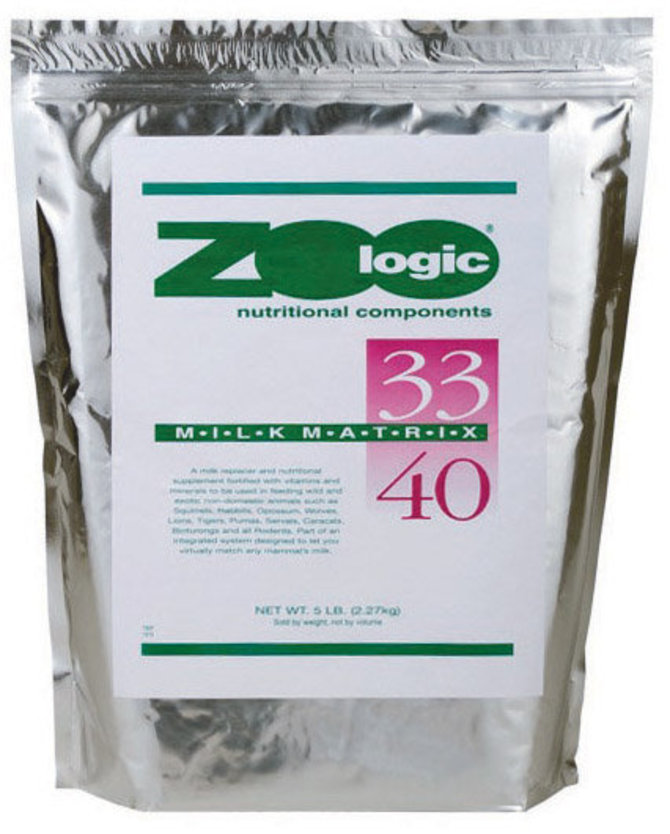

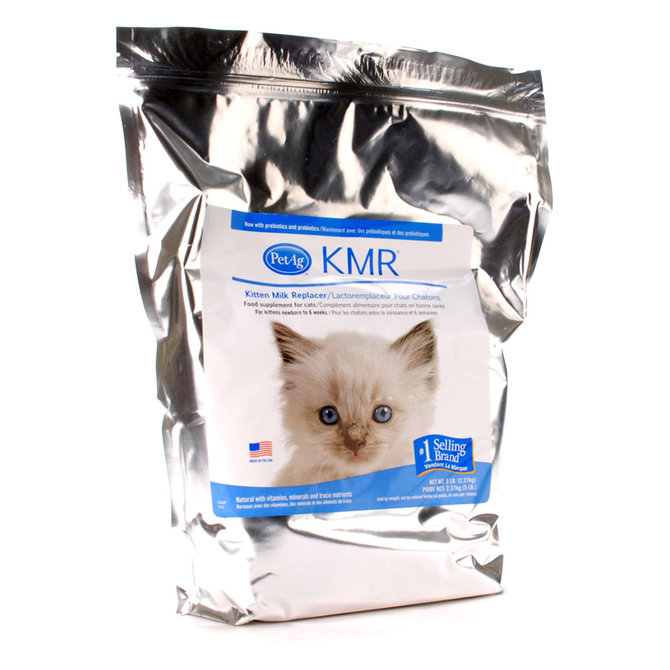

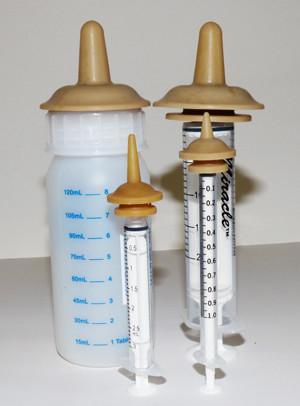

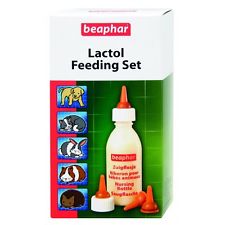

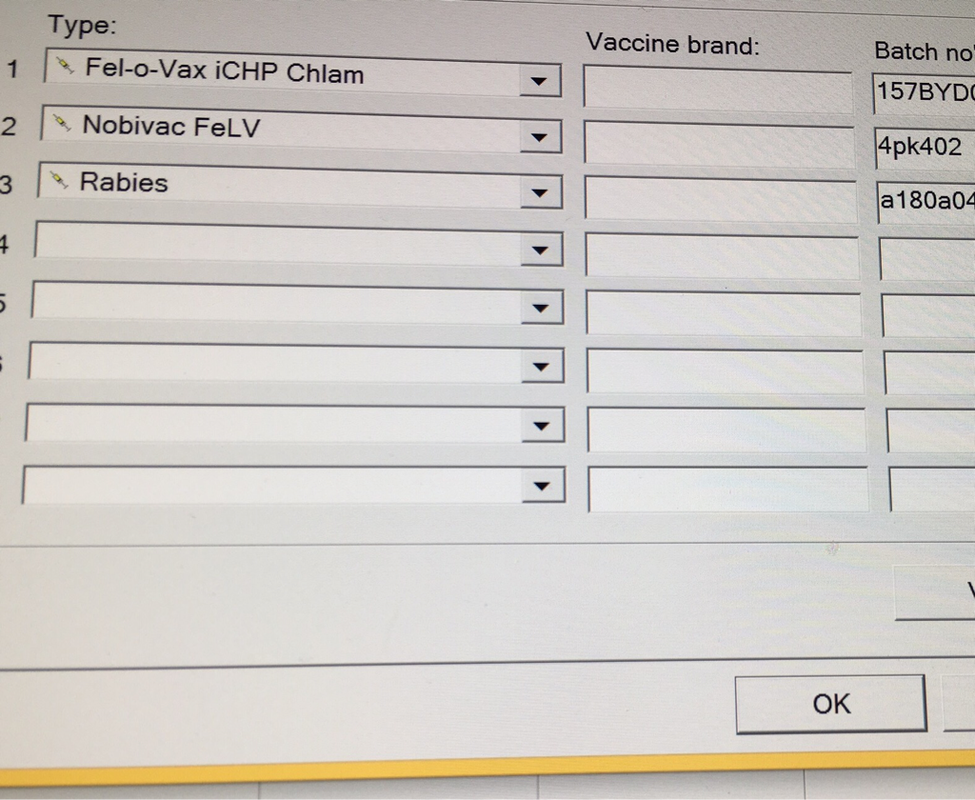
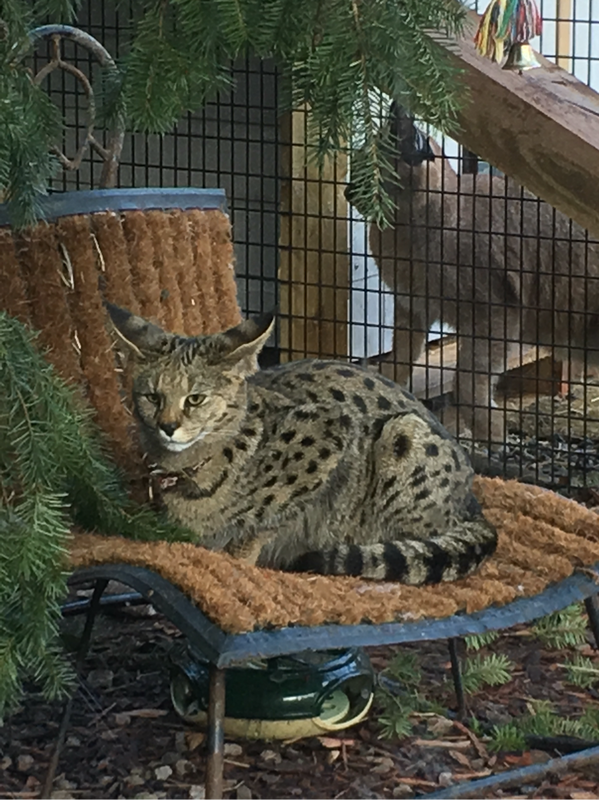










 RSS Feed
RSS Feed
